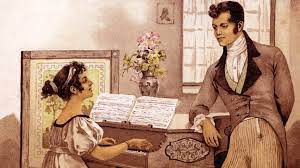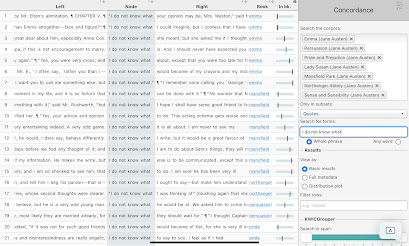The digital humanities, also known as humanities computing, is a field of study, research, teaching, and invention concerned with the intersection of computing and the disciplines of the humanities. This blog is a lab activity assigned by Barad Sir on the CLiC Project.
Exploring the theme in ‘The Sign Of Four’
‘The Sign of Four’, is a Sherlock Holmes novel written by Sir Arthur Canon Doyle. In this activity we shall see how the themes of Justice and Role of women is dealt by Doyle.
For this activity, we begin by searching which characters have said the word “Justice”. We have to see which characters have said these words most times.
We can obtain these data within minutes and determine that it was said by the antagonist of the book Jonathan Small. This is surprising as we would’ve thought justice would be the concern of Sherlock Holmes and Dr. Watson who keep working towards it. This new revelation however, helps us in understating the character of Small in a better manner. He was not a villain. He was a man who felt wronged and through his actions he wanted to bring justice to himself. After him, Justice is said by Sherlock Holmes three times.
Now to understand the Role of Women in this novel, we search “woman” and “women” and see how they are described or talked about. Through the results, we see that women are mentioned 20 times in the book.
The words used to describe women are “Agitated”, “Trembling”, “Attractive”, “Frightened”, “Graceful”, etc. Through reading these lines and in the context they are said, we come to know that women are seen as fragile being who are easily distressed. The book presents women as weak and in need of help. This reflects how Doyle too followed the thinking pattern of his time period.
Another word used to describe woman is “Wronged”. This can be traced back to the theme of Justice. Small wasn’t the only one who was cheated. Mary too, lost her father and was wronged. This justifies her action of taking help from Sherlock Holmes.
Fictional and Real Speech In Jane Austen and 19th C
In most literary fiction, even where dialect or pronunciation is imitated, the speech of characters does not accurately equal the hesitancy, non-fluency, and fragmented nature of actual real speech. Instead, speech is used for characterisation, for narrative dynamic, for dramatic intensity, and for symbolic and thematic purposes. Through this activity, we shall examines some patterns in fictional speech and look at how they overlap, or not, with patterns in real spoken language.
Here is the list of 15 common speech clusters used during 19th century.
When we search them in the Jane Austen novels, we get results on how many times and in which books they are used. Here are a few examples -
Last phrase explored is “I did not mean to”. It is mostly used to clear the air in a polite manner or to negotiate opinions. It is also noteworthy that it is used most times in the novels “Emma” and “Sense and Sensibility”.
Learning Outcome
Through this activity, I got to know a lot about 19th century culture as presented in the books. Without the use of such digital tools, activities like these would not have been possible. Through such activities, we get to know how helpful digital techniques can be in studying literature. They provide us with new insights and new scope of research.
Words - 783
Images - 9










Comments
Post a Comment